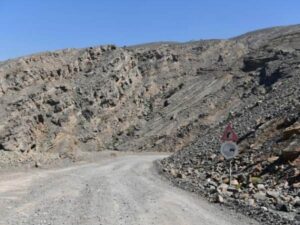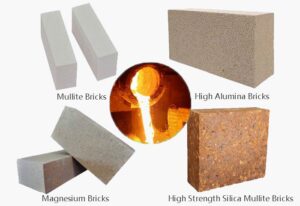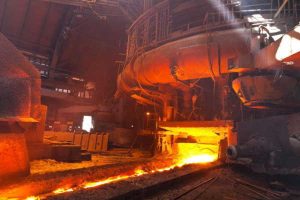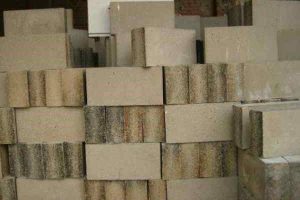Analysis Of Aluminum-Silicon Refractory Raw Materials
Prof. Li Yong of the University of Science and Technology Beijing made a report entitled “Recent development of China’s metallurgical refractories from the perspective of refractory raw materials”, which explained the recent development of Al2O3-SiO2 refractory raw materials.
![]()
First of all, Prof. Li analyzed the characteristics of Al2O3-SiO2 refractory raw materials in China: natural refractory minerals are rich in bauxite resources, which are mainly distributed in Henan, Shanxi, and Guizhou. However, bauxite ore with high aluminum content (I grade bauxite, Al2O3 ≥80%) is scarce, and most of them are used in the aluminum refining industry.
High-grade “three-stone” ores (bluestone, rhodochrosite, and silica) are rare. There is a large amount of medium and low-grade waste solid ore (coal gangue, waste bauxite, red mud, metallurgical slag, etc.). It is believed that the efficient utilization of tailings and low-grade Al2O3-SiO2 minerals after beneficiation is the development direction of China’s aluminum-silica refractory raw materials.
At present, the homogenization method is a kind of processing technology for the rational and efficient utilization of Al2O3-SiO2 natural minerals and has been developed rapidly, but it is necessary to explore the suitable firing method.
Among them, the low and medium-grade Al2O3-SiO2 mass minerals (45%-70% Al2O3 content) have low impurity content. These materials are difficult to sinter due to the expansion effect associated with secondary mullite mineralization.
Medium-grade bauxite-based homogeneous material secondary mullite reaction is more obvious, using tunnel kiln calcination is easy to fall down the kiln, and sintering safety is poor. Low aluminum content of bauxite-based homogeneous material firing equipment to choose a wider range, can be used to homogenize the tunnel kiln or vertical kiln firing.
![]()
It is suggested that the development of an electrofusion process can be further explored to prepare low aluminum bauxite-based electrofusion mullite.
The chemical composition of the electrofused low-alumina bauxite ore is Al2O3-67.67%, SiO2-14.20%, TiO2-5.38%, Fe2O3-0.11%, with a bulk density of 3.05g/cm3.
The bauxite-based mullite material prepared by the electrofusion method is characterized by high density, low content of Fe2O3 impurities, well-developed mullite crystals, and TiO2 distributed in the mullite in the form of fugitive.
“Three stones” is the production of low creep bricks, erythrite bricks, and other metallurgical refractory products indispensable main raw materials. China’s “three stone” mineral resources are scarce, and a large number of imported raw materials relying on South Africa, and Australia, such as rhodochrosite, Australia, etc., can be used to replace some of the “three stone” minerals such as silica-rich nepheline, chlorite, and other low-aluminum minerals.
Datong, Shanxi, Inner Mongolia gangue Al2O3 content of 45% -50%, with low impurity content (especially low Fe2O3 content), and rich storage capacity. It is a high-quality aluminum refractory raw materials, gangue-based refractory raw materials development, and application of rapid development.
Summarize
In short, Al2O3-SiO2 natural raw material composition to determine the technical route of its products, such as iron ladle – aluminum-carbon system (using chlorite – silicon carbide-based), hot blast furnace low creep system (using ordinary sintered corundum – bulk solid abandonment of the preparation of the electrofusion mullite as raw materials), the corundum mullite system with low impurity content has excellent resistance to alkali vapors and resistance to CO corrosion performance.
Brown corundum is a high alumina bauxite as raw material in the electric arc furnace purification and removal of impurities, the main impurities include: Ti2O3, Ti ( C, N, O ), alloy phase TiFeSi2, low melting point phase Ca3Al2Si3 (Mg, Ti) O12, calcium aluminate Ca0.95Mg0.9Al10.1 (Ti) O17, as well as Al4C3 and C. After heat treatment at 1600 ℃ in nitrogen, the brown corundum content of the corundum mullite is about 1.5 times higher than that of the brown corundum. After heat treatment at 1600°C under nitrogen, the Ti element in the Ti-bearing phase of brown corundum is deoxidized and Ti(C, N) is precipitated in the low-melting phase, thus improving the properties of brown corund.
Sintered corundum materials are divided into three grades according to their bulk density: >3.45g/cm3, >3.55g/cm3, and>3.65g/cm3. Some low-density sintered corundum can be used in the corundum-mullite system for hot blast furnaces, and the bulk density of sintered corundum is generally 3.55g/cm3.
Densified sintered corundum materials (>3.65g/cm3) are more suitable for steelmaking systems: sliding plates, continuous casting “big three”, ladles, refining ladles, etc.
Improving the bulk density of sintered corundum is a worldwide challenge, with a bulk density of 3.65g/cm3. At present, there is no solution in the world.




